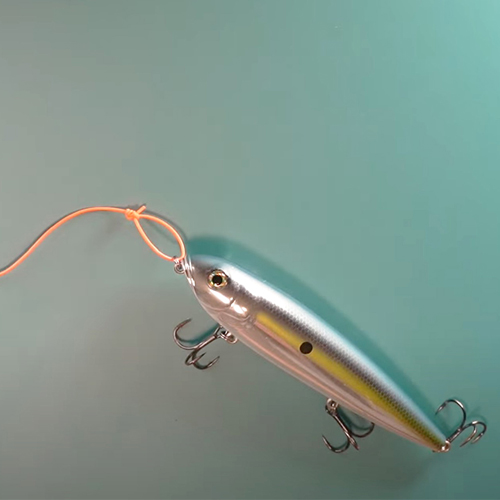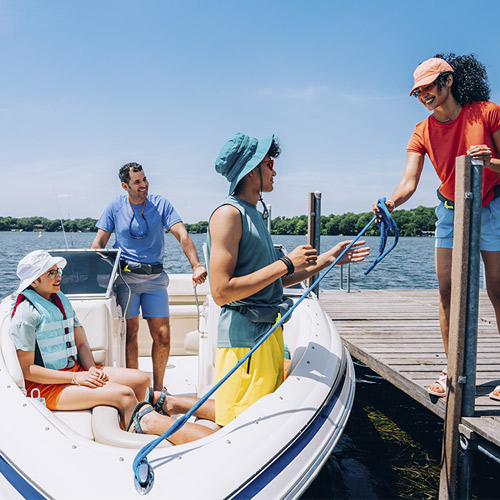Freshwater Fishing Rigs
A fishing rig describes the way you tie together bait, lures, hook, swivels, leaders, sinkers, bobbers, flashers, dodgers, and anything else you can attach to a piece of fishing line. Learn how to create fishing rigs for freshwater fishing.
Freshwater Rigs
Just because you can tie a lot of different things to a line, doesn't mean that your fishing rig needs to be complicated. Most freshwater fishing rigs are relatively simple and used for specific fishing techniques. Keep in mind that the best fishing rigs are those that attract the type of fish you’re seeking.
Three Freshwater Fishing Rigs Every Angler Should Know
Still Fishing Rig
Still fishing is an easy way to get started freshwater fishing because it’s versatile and can be done when fishing from a pier, a bridge, an anchored boat or from shore. It allows you to fish on the bottom or with your bait suspended above the bottom in ponds, lakes, rivers and streams for a variety of species. Still fishing can be done during most seasons and during any part of the day. The key to still fishing is patience as you wait for the fish to bite. The fishing rig you use depends on what kind of fish you're after, but let’s start with one of the most basic fishing rigs for freshwater, the basic bobber rig.
Fish Finder Rig
Basic Bobber Rig
For still fishing, beginner anglers should try the basic bobber rig. Follow these steps to put together the basic bobber rig:
Drift Fishing Rig
Drift fishing allows you to fish over a variety of habitats as your boat drifts with the currents or wind movement. You can drift fish on the bottom or change the depth with a bobber or float. Freshwater fishing rigs with natural baits work best. But jigs, lures and artificial flies in your drift fishing rig will produce good results too. You can drift fish on ponds, lakes, rivers and streams any time of the day and year.
Sliding Sinker Rig
For drift fishing, anglers should try the sliding sinker bottom rig. It is a popular, versatile rig and is an effective way to fish bait off the bottom, both from shore and while drifting in a boat. Some bass anglers prefer the slider sinker rig when assembling freshwater striper fishing rigs with live bait. The presentation of the rig allows the sinker to rest on the water bottom with the bait suspended above. This feature prevents the fish from feeling the weight as the line passes through the sinker. Follow the steps in this video to put together the sliding sinker rig:
3-Way Rig
Another of the various freshwater rigs that works for drift fishing is the 3-way rig (it can also be used when fishing from shore in current). This rig is designed to keep your bait off the bottom. Both catfish and surf anglers use three-way rigs as well. Pyramid sinkers work well to hold the line in the sand and mud and are often tied to the bottom swivel to anchor bait offerings in tides.
Live Lining Rig
Your line is “live” when your boat is anchored in a flowing body of water like a river or stream. Use live or prepared baits in your live lining fishing rig and keep them on or just off the bottom. Live lining fishing rigs allow your line to drift with the current through holes and rocks where the fish may be holding. While the fishing rig you choose will depend on what type of fish you’re after, live lining is another favorite of the various freshwater fishing rigs among bass anglers.
Trolling RigMost trolling uses a boat with a small electric motor that moves the boat quietly through the water to avoid spooking the fish. But you can also troll by towing a fishing rig while walking along the edge of a shoreline, bridge or pier. The speed of the boat determines the depth of your bait. And the depth of the bait on these freshwater fishing rigs is determined by the species of fish you’re trying to catch. Use a spinning reel or a bait caster for trolling. Some states don’t allow motorized trolling, so check out your local fishing regulations to avoid tangling with enforcement.
Bottom Bouncing Fishing Rig
Bottom bouncing from a drifting or trolling boat is a great way to attract or locate fish during most seasons and times of day. Use a bucktail jig or natural bait in your bottom bouncing rig and drag it along the bottom. The dragging motion on these types of freshwater fishing rigs causes the lure to bounce along, stirring up small clouds of sand or mud. After a few strikes with bottom bouncing, you can drop anchor and apply other freshwater rigs to hook the specific species you've attracted.
To learn more about freshwater fishing tackle visit our next section.
KEEP LEARNING

How to Tie the Non-Slip Loop Knot
The non-slip loop knot is a popular and reliable choice for securing hooks, lures, and other tackle to your fishing line.
LEARN MORE

Socials
Take me fishing social media links
LEARN MORE

TakeMeFishing x Teen Vogue
Join us on a creative journey as fashion designer Ahmrii Johnson walks us through her collaborative vision and process with Teen Vogue and fashion brand, Rentrayage, to create a special piece.
LEARN MORE


.png?lang=en-US&ext=.png)